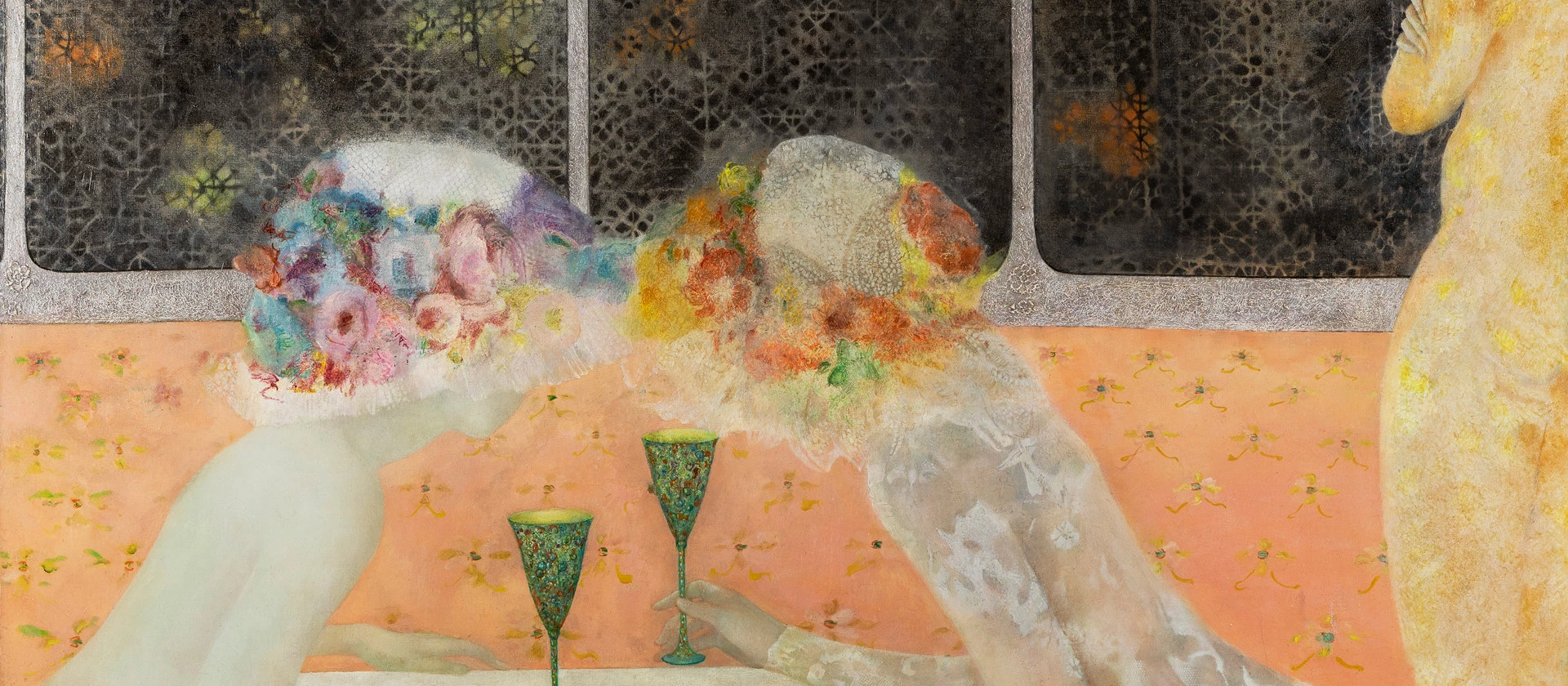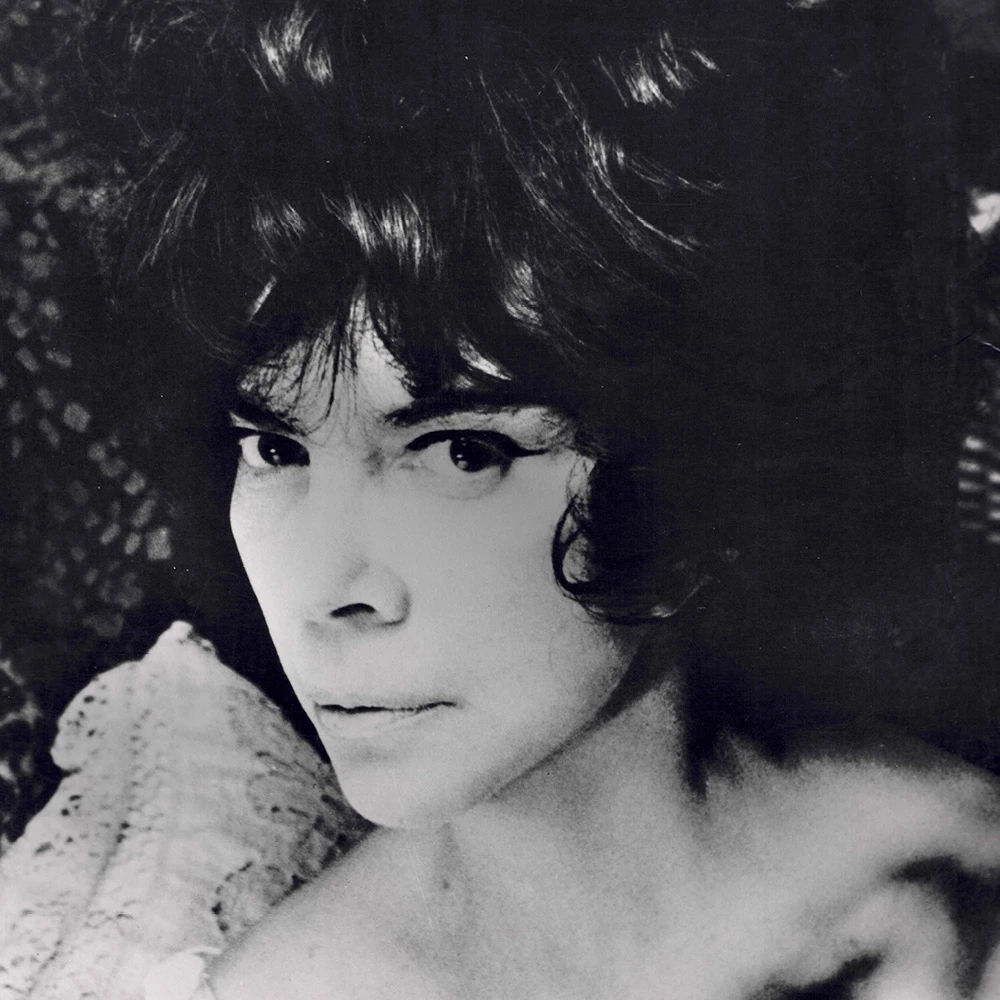Leonor Fini was born Eleonora Fini on August 30th in Buenos Aires, Argentina. Her father, Herminio Fini, comes from a Southern Italian family who had settled in Argentina. He is a handsome, wealthy businessman, a gambler, and a tyrannical man with extreme religious views. Leonor’s mother, Malvina Braun Dubich, was born in Trieste, her father being from Sarajevo, her mother of German, Slavic, and Venetian extraction. One year after Leonor is born, due to her husband’s despotic and adulterous behavior, Malvina flees back to Trieste, taking her daughter with her. Following Herminio’s attempts to kidnap Leonor, Malvina starts disguising her as a boy whenever out of the house. Leonor grows up with her mother in a bourgeois and intellectually stimulating environment. As a kid Leonor starts drawing, something she would continue doing until the end of her life. Two of Fini’slifelong passions starts at this stage: her love for cats – starting with her first cat, Cioci – and that for dressing up.
In the 1920s Leonor produces her first oils and portraits. After befriending the Metaphysical artist Arturo Nathan, she encounters the work of the German Romantics and of Giorgio de Chirico. At the age of 16, after spending two months in a darkened room with bandages over her eyes due to ocular rheumatism, she makes the decision to become an artist. In 1928, her uncle Ernesto agrees to finance a period of study in Milan. In the city, Fini befriends Giorgio de Chirico and is invited to exhibit with the Novecento Italiano group. She meets Mario Sironi and Carlo Carrà, and studies with a leading member of the group, Achille Funi. His work inspires Leonor to paint portraits with a neoclassical atmosphere and Renaissance reminiscences.
Bored with Milan and the fascist atmosphere in the city, Fini travels with Arturo Tosi and his wife to Paris, where spends time with de Chirico and his brother Alberto Savinio. On her return to Milan, she meets a handsome Italian prince, Lorenzo Ercole Lanza del Vasto di Trabia. They become lovers and decide to move to Paris. In 1932 the two separate. Max Jacobs, who sees Fini’s paintings, shows them to Christian Dior, at this time director of the Galerie Bonjean. He gives Fini a solo show running from November 24 to December 7. Dior introduces Fini to the couturier Elsa Schiaparelli, who lends her fashionable dresses to wear at parties for publicity value. At a garden party given by couturier Jacques Heim she meets Max Ernst and the two soon become lovers. Fini is invited to participate in three important shows in Paris: La peinture italienne contemporaine at the Musée du Luxembourg with de Chirico, De Pisis, Carrà, Severini and Campigli, followed by Comme ils se voient, comme ils sont (self-portraits and photographs) at the Galerie Bonjean, and Portraits Contemporains at the Galerie de Paris. In 1935 she takes part in a second exhibition of Surrealist drawings at the Galerie les Quatre Chemins with de Chirico, Dalì, Ernst, Mirò, Picasso and Tanguy.
Thanks to art gallerist Julien Levy, Fini meets Salvador Dali and Pablo Picasso.
Fini travels to New York for the first major exhibition of her paintings, held at the Julien Levy Gallery. De Chirico writes a panegyric to be published in the exhibition catalogue. Fini features alongside de Chirico, Ernst and other Surrealists in the Museum of Modern Art’s important Fantastic Art, Dada, Surrealism, opening in December. Fini’s friendship with the couturier Elsa Schiaparelli gives her an entrée into the world of fashion. Fini illustrates many creations by Schiaparelli and Balenciaga for Vogue and Harper’s Bazaar, and designs carpets and wallpapers. In1938 Schiaparelli launches her Shocking perfume with a bottle designed by Leonor in the shape of a mannequin’s torso resembling Mae West’s hourglass figure. In 1939 Leo Castelli opens his first gallery in Paris. Fini, who had met him in Trieste, organizes there an exhibition on pieces of furniture in the Surrealist style.
In 1940, after the German army enters Paris in 1940, Fini moves to Monte Carlo. The city is full of wealthy people who like to be immortalized in a painting. As Leonor has to make a living, portraiture becomes a regular part of her life. Fini’s La Bergère des sphinx is shown at the inaugural exhibition of Peggy Guggenheim’s gallery Art of this Century, alongside works by Ernst, Magritte, Miró, Leonora Carrington, and others. In Monte Carlo she meets Stanislao Lepri, the Italian Consul to the Principality of Monaco and an amateur artist, who becomes her lover. Lepri appears in Fini’s painting Autoportrait avec Stanislao Lepri, and in Portrait of Stanislao Lepri, where he is shown head and shoulder, nude and covered with ivy, on which many colorful beetles can be seen. Behind is a wall, covered in ivy and insects, ivy being a symbol of fidelity. Lepri would become one of Fini’s two great loves, and she should keep this portrait all her life. With Leonor’s encouragement, Lepri abandons his diplomatic career to devote himself full-time to painting. Lepriand Fini move to Rome in an apartment in Via del Gesù, where they entertain a variety of visitors, including Anna Magnani, Mario Praz, Alberto Savinio, Fabrizio Clerici, Alberto Moravia and his wife Elsa Morante. Fini needs to make a living and turns once again to portraiture. In 1945 Fini meets the young and beautiful Count Sforzino Sforza, who becomes her lover. Leonor and Sforzino move to Paris, where they are joined by Lepri. She acquires a menagerie of exotic cats and decorate her rooms with brilliantly colored materials, ex-votos, Venetian rococo mirrors, and roots, bones, and skulls from the Isola del Giglio. Here Fini holds court and gives fancy-dress parties. The revival of “society” life in Paris gives her an opportunity to indulge her passion for dressing up. In the Galerie Vendome in Paris presents an exhibition of Fini’s work, including the La grande racine, Sphinx Philagria, a selection of portraits and Aurelia watercolors. Critics speak about “a new Baroque”, “the resurrection of Mannerism”, “magic reality”, seeing affinities between Fini’swork and Arcimboldo, Piero di Cosimo, and Jan van Eyck. Fini has a solo show in New York at the Hugo Gallery, at that time managed by Alexander Iolas.
In 1952, the Polish writer Constantin Jelenski (Kot) arranges to meet Fini in front of a painting by Fabrizio Clerici (The Minotaure Accused by His Mother) at the Seconda Quadriennale d’Arte in Rome. The attraction between them is immediate: the other great love of her life begins. She is delighted to learn that kot in Polish means cat. She invites him to come and live with her at Rue Payenne. Kot would become Fini’s indispensable consultant, manager and confident, organizing her exhibitions and publishing writings about her work. Sforzino leaves Leonor’s entourage because of jealousy, after discovering that Kot is his half-brother. Finiand Sforzino will remain friends. Kot permanently joins Fini in Paris. Lepri is jealous at first. Eventually, the three begin to form a very close friendship that will last for the rest of their lives. In the late 1950s the smooth finish of her recent work gives way to a rougher, less distinct style, with surfaces that seem encrusted with jewels of pure paint. It is the start of her so-called “mineral period”. This is in part inspired by Fini’s excitement in discovering the underwater world during her swimming expeditions at Nonza.
In 1960 Fini exhibits in Antwerp, Brussels, Madrid, Turin, Paris, and she has a solo show at The Alexander Iolas Gallery in New York. She also exhibits her work at Kaplan Gallery in London, with a text by Max Ernst. Her painted work begins a transformation from the Surrealist mood of the 1940s and the mineral period toward precise images in bright colors. In the late 1960s, she meets Richard Overstreet, who becomes a close friend. He will found the Leonor Fini Archive following the artist’s death. Leonor continues her series of images relating to women’s vanity. She exhibits in Gstad, Hamburg, Trieste, Cologne and Geneva. She is in demand for interviews and the recipient of prizes and other honors. She spends much time on book illustration. She publishes her first novel, Mormour, a short story written in Nonza in 1968. By the end of the 1970s, she publishes two more, L’Onéiropompe, a rather Surrealist tale about a cat who dreams and the quest for the solution to a secret, and Rogomelec.
In 1980 Stanislao is seriously ill in hospital. He has been suffering from prostate cancer for some time but has at first managed to conceil it from Leonor. In December he dies. It is an enormous tragedy for her. In 1980s several retrospectives are organized on Fini’s work, including one at the Musée du Luxembourg in Paris, organized by a friend the art dealer Arlette Souhami. Kot dies after a sudden short illness. It is again a blow that devastates Leonor. She struggles to work and paints very little.
In 1990 with Arlette Souhami, Fini organizes an exhibition dedicated to Lepri at the 6th arrondissement City Hall, Place Saint-Sulpice in Paris. Fini is dogged by ill health.Fini dies on January 18 1996. Her obituarists see her as one the last representatives of the great pre-war generation of Parisian artists. At her request, she is buried in the graveyard at Saint-Dyé beside Stanislao and Kot.

